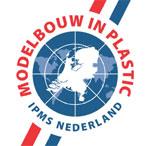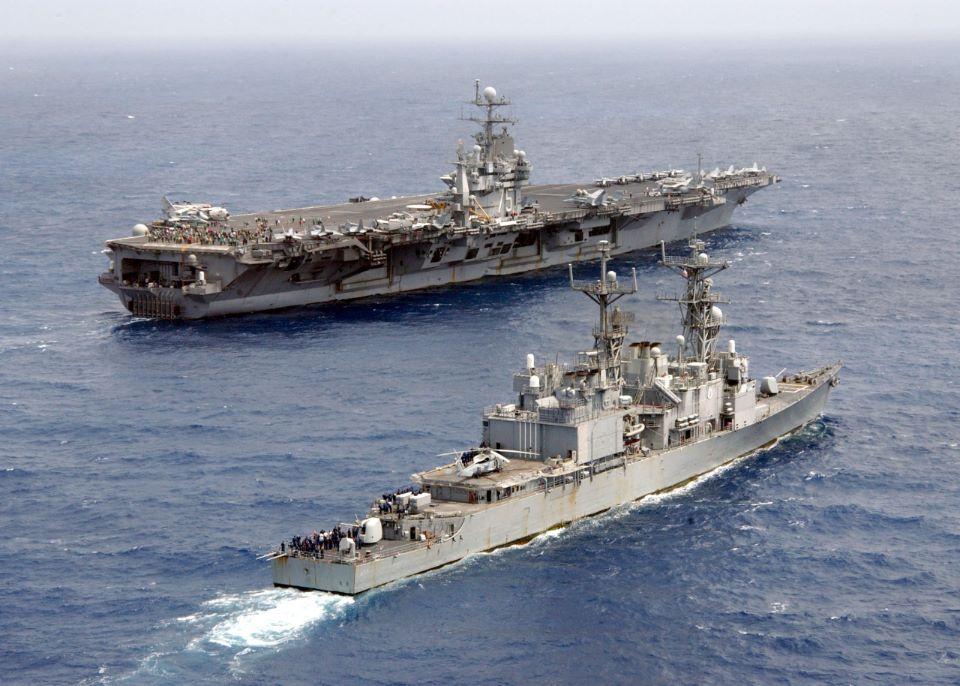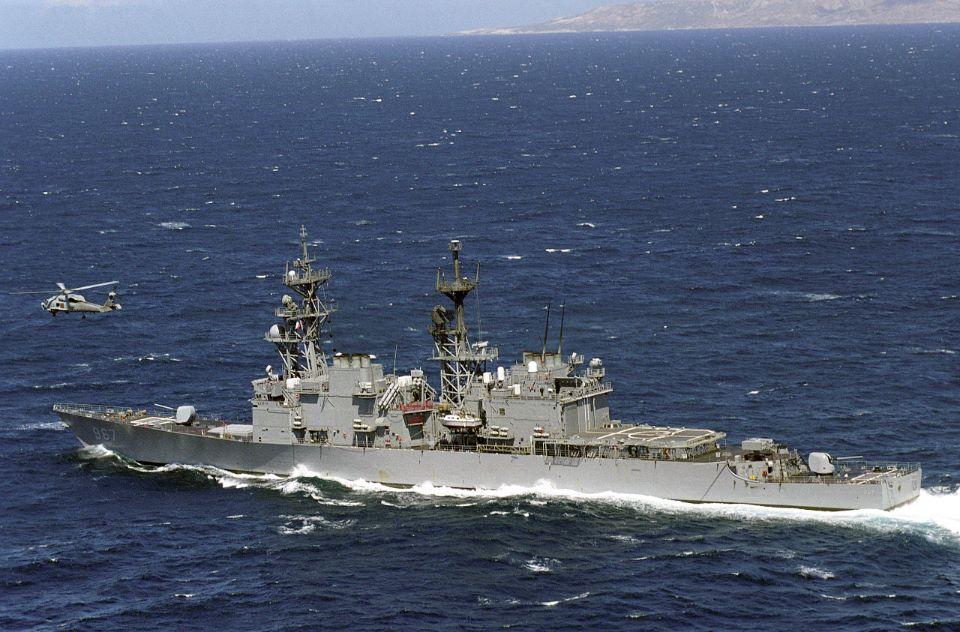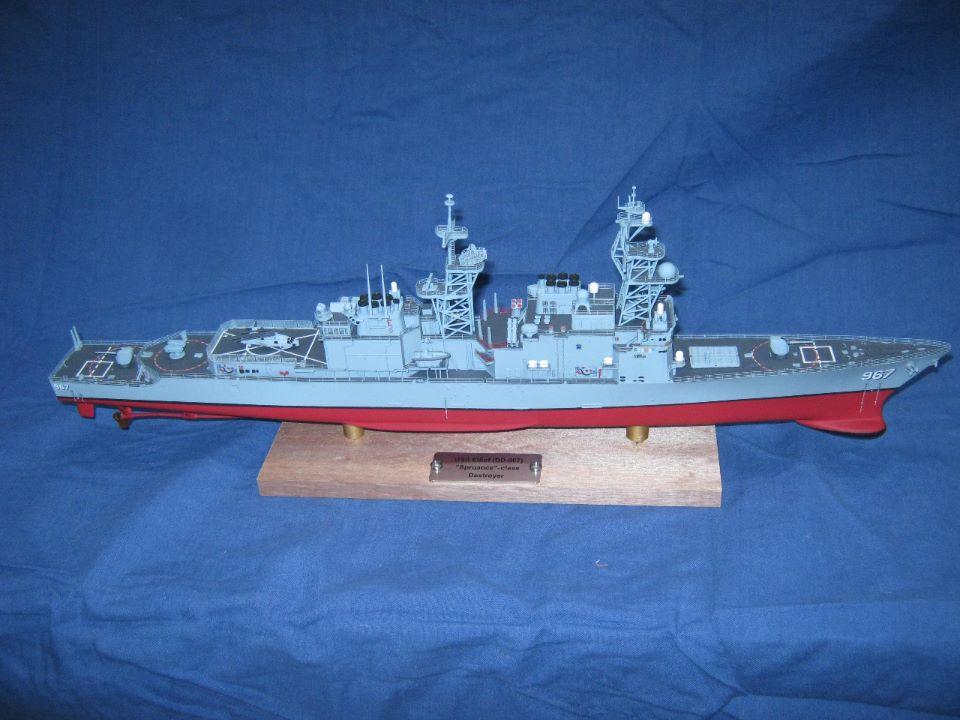Author: Walter Sonderman
Translated by B. Kirwan
NOTE: Nederlandse lezers kunnen hier het Nederlandstalige artikel lezen...
Introduction
The Spruance-class was a series of 31 destroyers built for the US Navy. They were built in the 70’s and 80’s as replacement for the large number of the wartime Allen M. Sumner and Gearing class destroyers. The Spruance-class destroyers were originally designed primarily as long range submarine hunters complete with ASROC launcher, torpedo tubes and two on-board helicopters.
Initially there was much criticism on the ships from the US Congress and from the US Navy. Grey-haired wartime admirals saw ships of 172 meters in length, having a displacement of 8000 tons, roughly the size of the WWII Cleveland -class light cruisers, and only armed with two 5 inch guns, six torpedo tubes, an ASROC(anti-Submarine Rocket) launcher and a Sea-Sparrow air-defence system. They compared the ships to the Gearing-class which had six 5 inch guns, to the Cleveland-class light cruisers armed with twelve 6 inch guns, and to the predecessor of the Spruances, the much smaller Charles F. Adams class destroyer which could fire the large Standard -missile.
The ships were designed specifically to allow for expansion and modernization. The large hull allowed for the housing of modern electronics and weapons systems and in addition it had a very long range. This was a specification of the post-war US Navy which had a vast area of interest to defend. The ships were well suited to escorting aircraft carriers. The hull formed a stable gun-platform which made the Spruance a successful sub-hunter role and also later when they were armed with cruise missiles.
Modernization at the end of the eighties and the start of the nineties gave the ships a land-attack capability. The ASROC installations were replaced with the so called Vertical Launch System (VLS) which allowed for the installation of 61 vertically orientated launch tubes for the Tomahawk cruise missile. The air defence systems were also improved with the addition of two 20mm Vulcan Phalanx CIWS (Close-IN Weapon Systems).
The US Navy classified the ships as DD (denoting gun-armed destroyers); though the DDG typology (Guided missile destroyer) or even the CG (guided missiles cruiser) would be more appropriate given the large number of guided mssiles which were installed shortly after their introduction to the fleet.
The “Spru-cans” ("can" being navy slang for a destroyer) were the first large ships in the US Navy with gas turbine propulsion. They had four General Electric LM2500 gas turbines generating 80.000 Hp (60 MV). This configuration was so successful that the hull and engine arrangement were used for the later Kidd-class and the Ticonderoga -class air-defence cruisers, the latter of which are still in service. The Kidds and the Tico’s proved the success of the design-philosophy of the Spruance.
The contract for the complete class of 31 ships was awarded to the Litton-Ingalls shipyard at Pascagoula , Mississippi under the “Total Package Procurement” concept promoted under the leadership of the former American Minister of Defence Robert McNamara. The idea being that mass production of the ships by contracting out to one yard would yield a cost advantages but labour costs and technical issues ensured delays and budget over-runs. An extra ship, the USS Hayler (DD-997) was ordered on the 29th September 1979. The Hayler was first planned as the DDH -design (destroyer, helicopter) with more helicopters than the standard Spruance-class. In the end the DDH-concept was rejected and the ships completed as an improved Spruance-class. Four extra ships were built for the Iranian Navy but these were finished as Kidd-class for the US Navy. The Kidd-class can be seen as the ultimate development of the Spruance-class. They were designed with maximum armament capabilities and were comparable to the Ticonderoga -class of air defence-cruisers with a displacement of 9.800 tons. The ships were fitted with full air-conditioning and considered comfortable.
The Spruance design was modular form the outset whereby sub-systems could be easily converted and /or replaced . Even though designed for the ASW role 24 ships were modernized with a 61-cell VLS with the capability of launching Tomahawk missiles. The other seven ships were retired early. At least 10 VLS ships had a 21-cell RIM-116 Rolling Airframe Missile (RAM) launcher on the starboard side.
The USS “David R. Ray”(DD-971) tested the RAM in the 1980’s but this installation was removed after testing. The USS “Arthur W. Radford” (DD-968) tested the Advanced Enclosed Mast/ Sensor system which aided the mast design of the San-Antonio-class amphibious transport ships. The USS “Merrill”(DD-976) served as a test platform for the navy’s Tomahawk cruise-missile programme whereby so-called armored-box installations were fitted with Tomahawks for launching.
During Operation Desert Storm the Spruance-class fired a total of 112 Tomahawks at land targets.
Despite the eventual success of the ships they were withdrawn form service after only twenty years to make way for the more modern Arleigh Burke -destroyers. The latter are fitted with the Aegis Combat System and the advanced SPY-1D radar. Already 62 of the 75 planned ships are currently in service. The last ship of the Spruance-class in active service , the USS “Cushing”(DD-985) was decommissioned on the 21st September 2005. They were offered to the Pakistani Navy.
The majority of the class ended their days as targets whereby the ships were deliberately sunk during exercises in the so-called Sinkex exercises.
The Kit
The Dragon 1:350 scale kit of the Spruance-class dates from the eighties when Dragon was neither the big league player in the market or known for its present quality.

Dragon followed the lead of Tamiya whose Yamato and Bismarck warship kit releases in 1:350 scale were instrumental in the development of this scale. Practically all variants appeared; up to and including the USS Arthur W. Radford (DD-968) with the Advanced Enclosed Mast and the USS Cushing (DD-985), the last ship in active service. The latter, together with the USS Elliot (DD-967) are the subject of this article. As in real life, the kit also formed the basis for kits of the successful Ticonderoga-class cruisers and the Kidd-class destroyers.
I wanted to build three ships in various stages of development; the USS Merrill with the original ASROC installation, the USS Elliot after the fitting of the VLS -system on the bow but with the original smaller hanger, and the USS Cushing with the wider hangar and the RIM -116 Rolling Airframe Missile launch device on the rear starboard side. However, as also fleet-plans often go awry in real life, I only could pick up later the original kit (USS Ingersoll), out of which the USS Merrill could be built so I had to proceed with the USS Elliott and USS Cushing.
Hull and upper superstructure
As already mentioned the thirtysomething year old Dragon kit didn’t have the benefit of modern slide-moulding technique. The hull is made of two longitudinally split halves. Through the use of locating tabs gluing these (50cm) long hull halves should not be an issue but both kits had warped parts and the tabs only seem to aggravate the problem. The issue can be solved by fitting the foredeck and afterdecks (E13, C33 and C23). I didn’t use standard glue but used stain-remover.This stuff dissolves the plastic and bonds well but the real advantage is that it is as thin as water. It can be applied with a paintbrush and by using capillary action there is no need for clothes pegs: just some light pressing is enough. The decks were fitted after filing and filling.
It is advisable to construct the superstructure separately particular considering its length. This involves the fitting of 13 parts which have to be added at the same time more or less while keeping everything square. This job includes four superstructure decks and the flight deck. I eventually got it together but the previously mentioned gluing technique helped when gluing the main deck to the super structure. The side panels E1 and F1 were warped as well.
The bridge side panels K3 and K2 are supposed to flow over into the hull but not on this kit. The best solution is to spread them as filling is not an option, while also the superstructure decks have to be fitted. The obstrusive parts of the deck E4, E2, F8 and F21 are supported from the main deck. The many visible supports are made from plastic tubing.
Now that the hull and super structure are ready I decided to add the railings to the main deck and superstructure decks. I used the fantastic 350-12 Modern USN Warship set form Gold Medal Models. The advantage to adding these early on is that they can be painted with the rest. The disadvantage is that you need to be careful with masking and during the rest of the build. Luckily the material in the GMM sets is very forgiving; you can re-bend without it breaking or ending up as a ball of copper wire at the end of your fingers.
With the hull and superstructure assembled the whole thing can be painted in Tamiya Dark Ghost Grey (AS-25) and the hangar in Gunship Grey (TS-48). The decks are covered in Xtracolour FS16118 Gunship Grey . The superstructure decks on American ships are lighter than flight decks, which have been coated with a rough tar-like anti-slip material. If you stumble here while wearing short pants you'll know, speaking from life experience.

Finishing
The rest of the model is made up of the building of the armament, the funnels, small deckhouses, the ship's launches and the masts. The masts are made up of complicated network of tubes and are very prominent. Again kit shows its age; the mast is made up of two halves with an additional cross spars to be fitted simultaneously. The whole thing needs to be assembled squarely to avoid the impression of bent and broken structure. Don't bother to open up the holes in the deck where the mast is supposed to fit into; it will not fit! After completing the mast I fitted the railings on the platforms. The USS Cushing kit, the last of its class and to hit the market has a good set of PE railings. I however used the GMM set for both ships. The same set provided the AN/SPS -40 air search radar, wind vanes and other small parts to decorate the mast. The latter was affixed to the deck with superglue.
The funnels on the Cushing kit are made up of turned metal which looks a lot better than the original plastic funnels. The kit was brought out around 2000’s with a few improvements over the original.

The lifeboats, as they are commonly called, are not lifeboats at all but personnel-boats to move the crew to and from the ship. The actual life rafts are made up of inflatable dingy's that are stowed in life-raft canisters which are placed all over the ships. The kit’s boats were replaced with a resin set from Veteran Model; this set contained is a nice example of the captains barge (a rather luxurious motorboat with teak decking and chrome railings), while the so-called whaleboat has been replaced by a Rigid Hull Inflatable Boat (RHIB) as just as our Navy uses.
The armament of the Cushing and the Elliot is basically the same, however the Cushing has the RIM -116 Rolling Airframe Missile launcher on the starboard stern. The port installation of the Phalanx Close-In Weapon System (CIWS) is on a separate platform. On the Cushing I added two MK44 Bushmaster 30mm chain guns amidships. These guns have been fitted to all American warships in recent years and come from a resin set from Veteran Model. On both kits there are a number of small platforms missing for the life-raft canisters so a bit of scratch building with Evergreen was called for.
The better parts of the kit are the helicopters, the SH-60B Seahawk. These look well and I used them though modified them by sawing off the tail and fitted them as the folded option. I replaced the thick plastic rotors with the previously mentioned parts out of the GMM set.
Conclusion
As already mentioned the kit is dated, the fit of parts is not great and even bad in places but the fact is that this is the only Spruance-kit in 1:350 scale. An even worse clone kit has been released under the Mini-Hobby brand. The same goes for the Kidd and Ticonderoga kits which as in real life are drawn from the Spruance kit.
On the other hand the basics are fine and with some patience, perseverance, TLC, photo etch and resin additions a nice looking model can be made of this underrated, undervalued but important modern class of destroyers.
Author: Walter Sonderman (published April 2015 in Dutch)
Translated by B. Kirwan (translated article published September 2017)
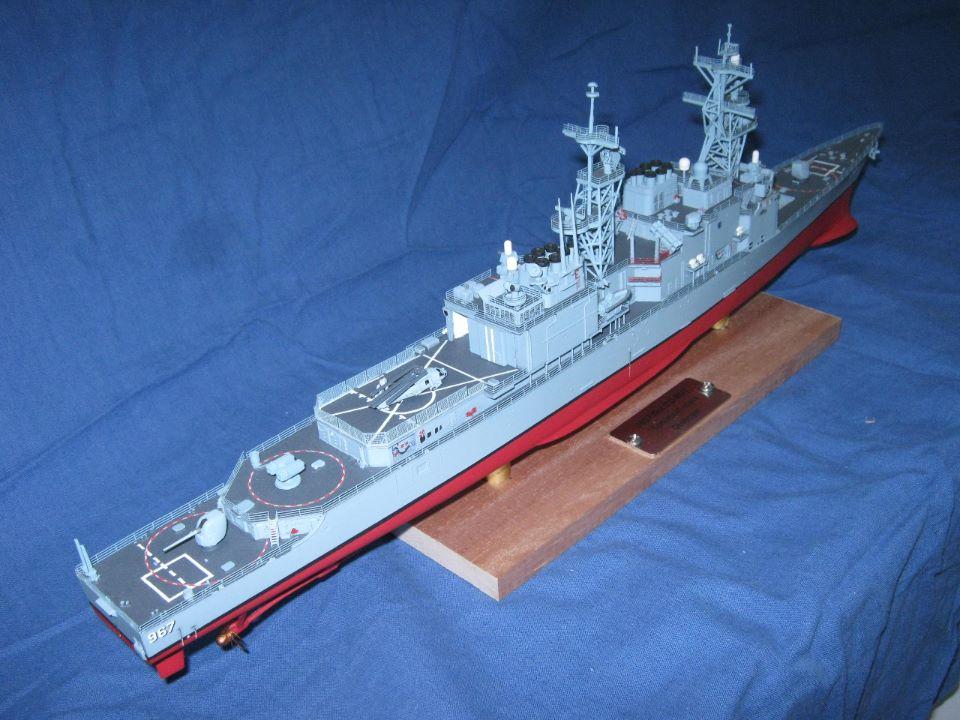



This translated article by B. Kirwan was first published September 2017 on this IPMS NL website
